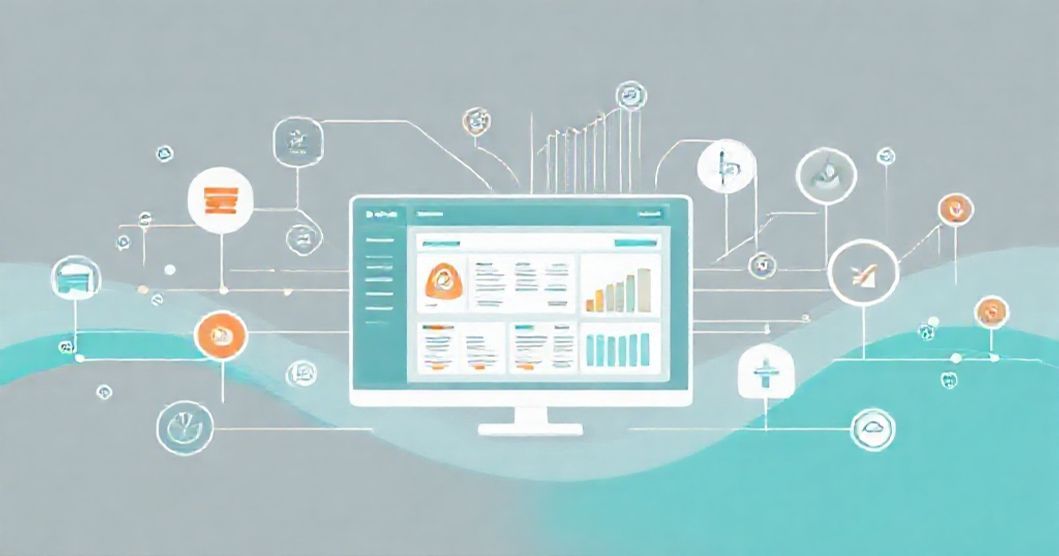In the dynamic world of e-commerce, operating a successful Etsy shop requires more than just creating unique products. To truly thrive, sellers must embrace efficiency and automation, which is where Etsy integrations become indispensable. These powerful tools connect your Etsy store with various external platforms and services, streamlining operations from inventory management to customer relationship handling. By strategically integrating your Etsy shop, you can significantly reduce manual workload, enhance accuracy, and free up valuable time to focus on product development and creative endeavors, ultimately paving the way for sustainable business growth and an optimized selling experience.
What are Etsy Integrations and Why are They Crucial?
Etsy integrations are third-party applications or services designed to communicate and synchronize data with your Etsy shop. They act as bridges, connecting your sales platform with other essential business functions like shipping, accounting, and marketing. The primary goal of these integrations is to automate repetitive tasks, ensure data consistency across different systems, and provide sellers with a holistic view of their business operations. For Etsy sellers, these tools are not just conveniences; they are crucial components for managing complexity as their business scales, preventing errors, and maintaining a professional front in a competitive marketplace.
Essential Categories of Etsy Integrations
The landscape of Etsy integrations is vast, covering nearly every facet of e-commerce operations. Understanding the key categories helps sellers identify areas where automation can yield the most significant benefits. These categories typically include inventory management, which ensures stock levels are always accurate; shipping and fulfillment, to streamline order delivery; accounting and bookkeeping, for financial clarity; and marketing and customer relationship management (CRM), to foster growth and customer loyalty. Each category addresses specific operational challenges, providing targeted solutions to enhance overall business performance and seller experience.
Inventory Management Integrations for Etsy Sellers
Managing inventory manually on Etsy can quickly become overwhelming, especially for shops with a diverse product range or those selling across multiple platforms. Inventory management integrations automate the tracking of stock levels, synchronize inventory across various sales channels, and alert sellers when items are running low. These tools prevent overselling, ensure accurate product listings, and save countless hours previously spent on manual updates. Some integrations also offer robust reporting features, providing insights into product performance and helping sellers make informed decisions about purchasing and production, thereby optimizing their overall stock management strategy.
Streamlining Shipping and Fulfillment with Etsy Integrations
Efficient shipping and fulfillment are critical for customer satisfaction and repeat business. Etsy shipping integrations automate the entire process, from generating shipping labels and tracking numbers to calculating shipping costs and selecting preferred carriers. These tools often integrate directly with major postal services and private couriers, providing sellers with access to discounted rates and simplifying customs declarations for international orders. By reducing manual data entry and human error, shipping integrations accelerate order processing, improve tracking accuracy, and enhance the overall post-purchase experience for customers, making fulfillment seamless and stress-free for sellers.
Accounting and Bookkeeping Integrations for Financial Clarity
Maintaining accurate financial records is paramount for any business, and Etsy shops are no exception. Accounting integrations connect your Etsy sales data directly with popular bookkeeping software, automating the recording of transactions, expenses, and revenue. This eliminates the need for manual data entry, reduces the likelihood of errors, and provides real-time financial insights. Sellers can easily track profitability, manage taxes, and generate comprehensive financial reports with minimal effort. These tools are invaluable for understanding the financial health of the business, simplifying tax season, and enabling strategic financial planning for future growth and investment.
Expanding Reach: Marketing and CRM Integrations
Attracting new customers and retaining existing ones is vital for sustained growth. Marketing and Customer Relationship Management (CRM) integrations help Etsy sellers automate and optimize their outreach efforts. These tools can integrate with email marketing platforms to build subscriber lists and send targeted campaigns, connect with social media schedulers for consistent brand presence, and manage customer interactions. CRM integrations provide a centralized hub for customer data, enabling personalized communication, tracking purchase history, and fostering strong customer relationships. By leveraging these integrations, sellers can enhance their brand visibility, drive traffic back to their Etsy shop, and cultivate a loyal customer base.
Advanced Etsy Integrations for Niche Business Models
Beyond the core functions, several advanced Etsy integrations cater to specific business models and needs, offering highly specialized automation. Print-on-Demand (POD) integrations, for instance, connect your Etsy shop with POD providers, automating product creation, order fulfillment, and shipping directly to the customer. This model eliminates the need for sellers to manage inventory or production. Similarly, dropshipping integrations allow Etsy sellers to source products from suppliers without holding inventory, automating the order processing from sale to delivery. For sellers operating across multiple e-commerce platforms, multi-channel selling integrations centralize product listings, inventory, and order management, ensuring consistent data and simplified operations across all sales channels, thereby expanding market reach efficiently.
Choosing the Right Etsy Integrations: Key Considerations
Selecting the most suitable Etsy integrations requires careful consideration to ensure they align with your business goals and operational needs. First, assess the specific pain points in your current workflow that you aim to resolve. Evaluate the compatibility of the integration with your existing systems and its ease of setup and use. Consider the features offered and whether they truly meet your requirements, avoiding tools that are either too basic or overly complex for your scale. Pricing models vary significantly, from free tiers to subscription-based services, so factor in your budget. Finally, look for integrations with robust customer support and a strong reputation within the Etsy seller community, ensuring reliable assistance when needed and a trustworthy solution.
Empowering Your Etsy Business Through Strategic Integrations
Etsy integrations are transformative tools that empower sellers to move beyond manual processes and embrace a more efficient, automated, and scalable business model. By thoughtfully integrating critical aspects of your operations—from inventory and shipping to accounting and marketing—you can unlock significant productivity gains, reduce operational costs, and enhance the overall customer experience. These strategic connections allow you to dedicate more energy to your craft and creativity, fostering innovation and product development. Ultimately, leveraging the right Etsy integrations is a cornerstone for building a resilient, profitable, and thriving online shop that is well-prepared for continuous growth and success in the competitive e-commerce landscape.






